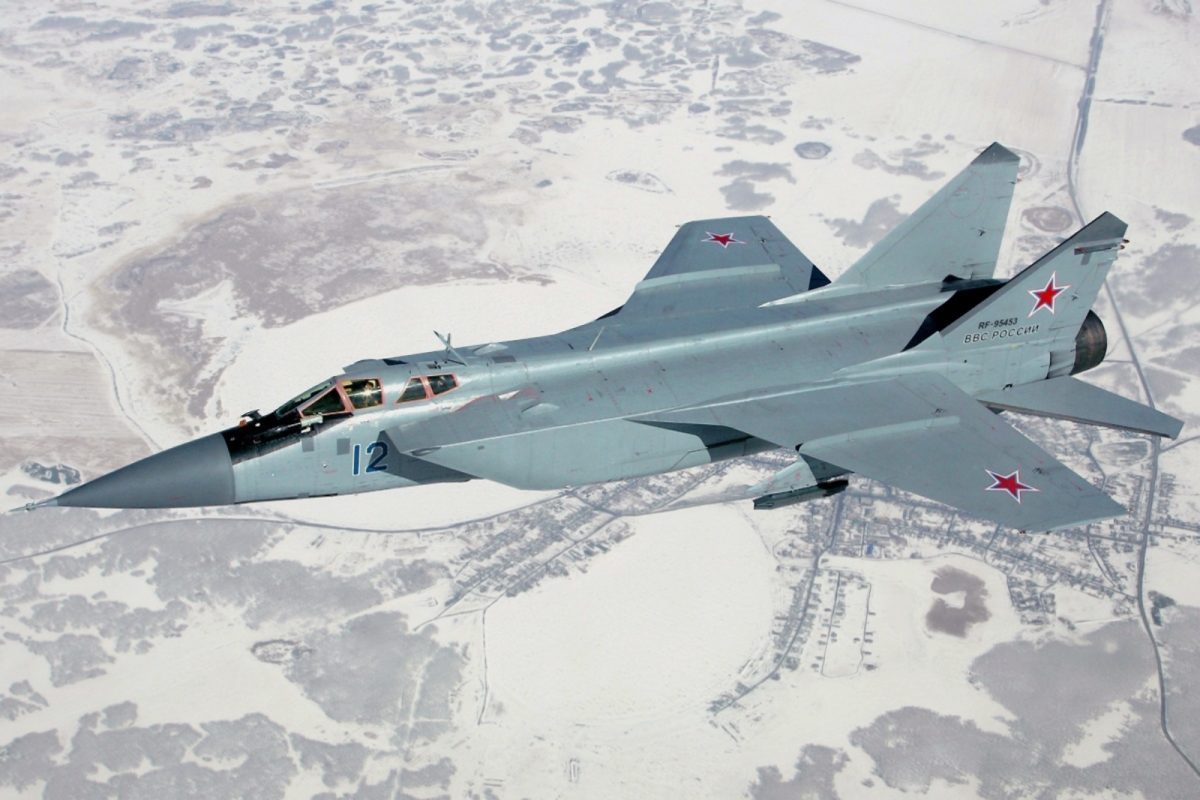On September 15, a video of an unidentified flying object that crashed in Stavropol, Russia, around 350 kilometers (220 miles) from the Ukrainian border, went viral on the internet.
US Launches ‘Pathbreaking’ Concept That Aims To Dramatically Reshape How Future Aerial Battles Are Fought
‘ATTACK With ATACMS’! Ukraine Pushes US For HIMARS-Compatible Long-Range MLRS; Russia Warns Of Consequences
The Russian media reports initially led people to believe it was a Ukrainian unmanned aerial vehicle (UAV). Later, Twitter users noted similarities between the wreckage and the Russian Kinzhal missile.
A Twitter user going by the handle LotA shared a video of the incident, which happened on September 14. According to the user, the unidentified object was a Russian Kinzhal missile.
And yes, the "booster" or the nozzle's aerodynamic cover didn't separate from the missile upon its separation from the carrier(?), which would probably mean that the main engine didn't ignite.
— LotA (@LotA_IL) September 14, 2022
“If anyone wondered what crashed today in Russian Stavropol region injuring six firefighters, you’d be very much surprised to know that it wasn’t a “Ukrainian UAV,” but a Russian Kinzhal missile,” he tweeted.
The missile was allegedly fired from a MiG-31 aircraft in the direction of Ukraine, but it is thought to have failed and crash-landed in Russia’s territory.

Twitter users drew attention to the resemblance between the object’s wreckage and the Russian Kinzhal missile, particularly the winglets and the booster’s separation mechanism.
LotA alleged that the missile’s “booster” or nozzle’s aerodynamic cover didn’t separate from the missile when it was released from the carrier, which suggests that the main engine did not ignite.
The fact that a booster was found on the debris suggests that the missile either misfired or was accidentally dropped by its carrier aircraft, Aerotime reported.
OSINTtechnical, an open source user, shared the thread and reminded that “In the last 6 months, Russia has hit Ukraine with three Kh-47M2 Kinzhal ‘hypersonic’ missiles and itself with one.”
On the other hand, Russian media outlets reportedly claimed that the unidentified aircraft was a Ukrainian Tu-141 Strizh reconnaissance drone. Ukraine is the sole known operator of unmanned aircraft at the moment.
- After Bayraktar Drones, Turkey Now Launches World’s 1st EW-Capable Unmanned Surface Vessel — Reports
- China Loses $11B Philipines Deal; Korean, European Firms Win Contract To Develop A Strategic Airport In ASEAN Nation
- Russia’s MiG-31 Fighter That Fired Hypersonic Missiles On Ukraine Conducted Drills In The Stratosphere
Rescue personnel arrived at the crash site and tried to put out the flames. The explosion hurt six people, including four locals and one firefighter.
According to Vladimir Vladimirov, the governor of the Stavropol Territory, a firefighter was injured while working at the scene. “He has been hospitalized and is being treated by paramedics,” he said.
Meanwhile, according to NewsWeek, Russia also employed the Kinzhal missile to strike the dam of the Karachunivske Reservoir in Kryvyi Rih, a city in Ukraine’s heartland and the birthplace of President Volodymyr Zelensky.
The head of the city’s military administration, Oleksandr Vilkul, said Russia had also employed Iskander missiles to attack the reservoir. The hits damaged a water pumping plant and flooded the embankments, causing some inhabitants to evacuate.
Zelensky criticized the strikes in his address, stating they had “no military value at all” and that attempting to impact “hundreds of thousands of ordinary civilians” was another reason “why Russia will lose.”
Kinzhal ‘Hypersonic’ Missile
The Russian army has thus far fired three Kinzhal hypersonic missiles into Ukraine. In March 2022, the Kh-47M2 Kinzhal hypersonic missile, developed by Russia, was first used in a strike against a weapons depot in western Ukraine’s Ivano-Frankivsk area.
https://twitter.com/i/status/1505919391296540673
The Russian defense ministry released the information and a purported video of the strike. Platforms that can go faster than Mach 5, or around 3,836 miles per hour, are hypersonic.
#Russian MOD showed footage of the destruction of an underground hangar with armament of the Armed Forces of #Ukraine by "Kinzhal" missile pic.twitter.com/Z4YOHE4RKv
— Middle East Update (@islamicworldupd) March 19, 2022
The first stage of the 9K720 Iskander-M ground-launched missile is most likely the basis for the Kh-47M2 Kinzhal, which also has a booster attached. According to Russian media outlets, the MiG-31 heavy interceptor and the Tu-22M bomber can carry the hypersonic missile.
Official Russian sources claim that it can reach a top speed of either Mach 10 or March 12. (10 or 12 times the speed of sound). The Kh-47 Kinzhal (“Dagger”) missile can travel 2000 kilometers. It can carry a 500-kiloton nuclear warhead, which is 33 times more powerful than the atomic bomb that obliterated Hiroshima.
Using a radar seeker, the missile can accurately strike stationary and moving targets. The Kinzhal missile must be fired from a high-altitude aircraft that can fly at high speed. The MiG-31, an air defense interceptor capable of Mach 3, is ideal for carrying the missile.
The Russian Air Force is believed to have 252 MiG-31s in its inventory, of which 10 to 20 have been modified to fire Kinzhals, according to a previous EurAsian Times report. Despite Russia’s claims about the Kinzhal and its development of other “next generation” systems, many Western specialists feel that Russia overstates the relevance of these weapons.
The Center for Strategic and International Studies notes, for instance, that “Russia’s designation of the Kinzhal as a ‘hypersonic’ missile is somewhat misleading, as nearly all ballistic missiles reach hypersonic speeds… at some point during their flight.”
The United Kingdom’s Ministry of Defense highlighted that the deployment of the Kinzhal was “likely intended to detract from a lack of progress in Russia’s ground campaign” and “unlikely to materially affect the outcome of Russia’s campaign” in Ukraine.
Nevertheless, it is still a vital weapon in Russia’s arsenal. However, if the most recent claims are accurate, it is evident that reservations about its capabilities will grow.
- Contact the author at ashishmichel@gmail.com
- Follow EurAsian Times on Google News